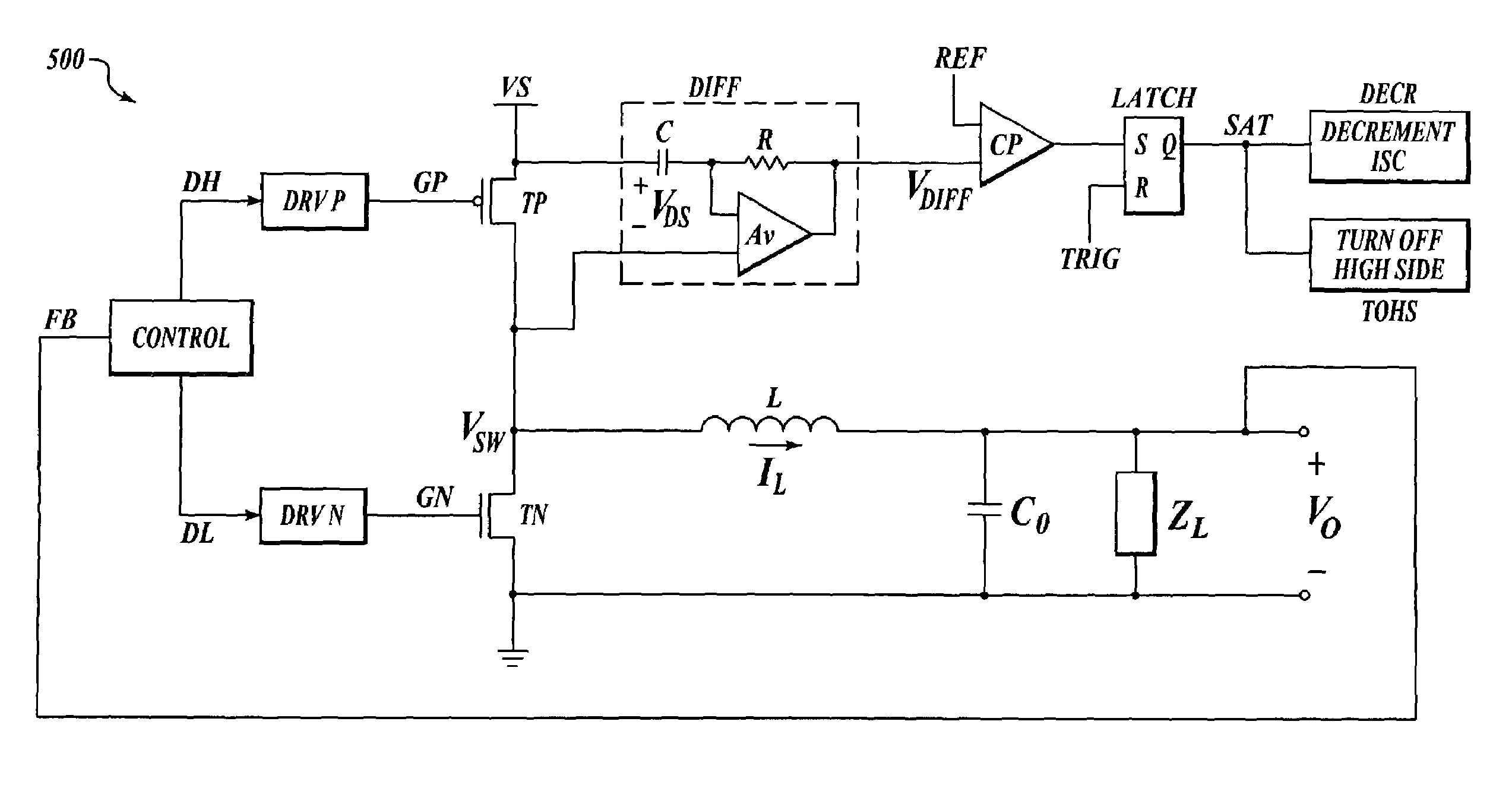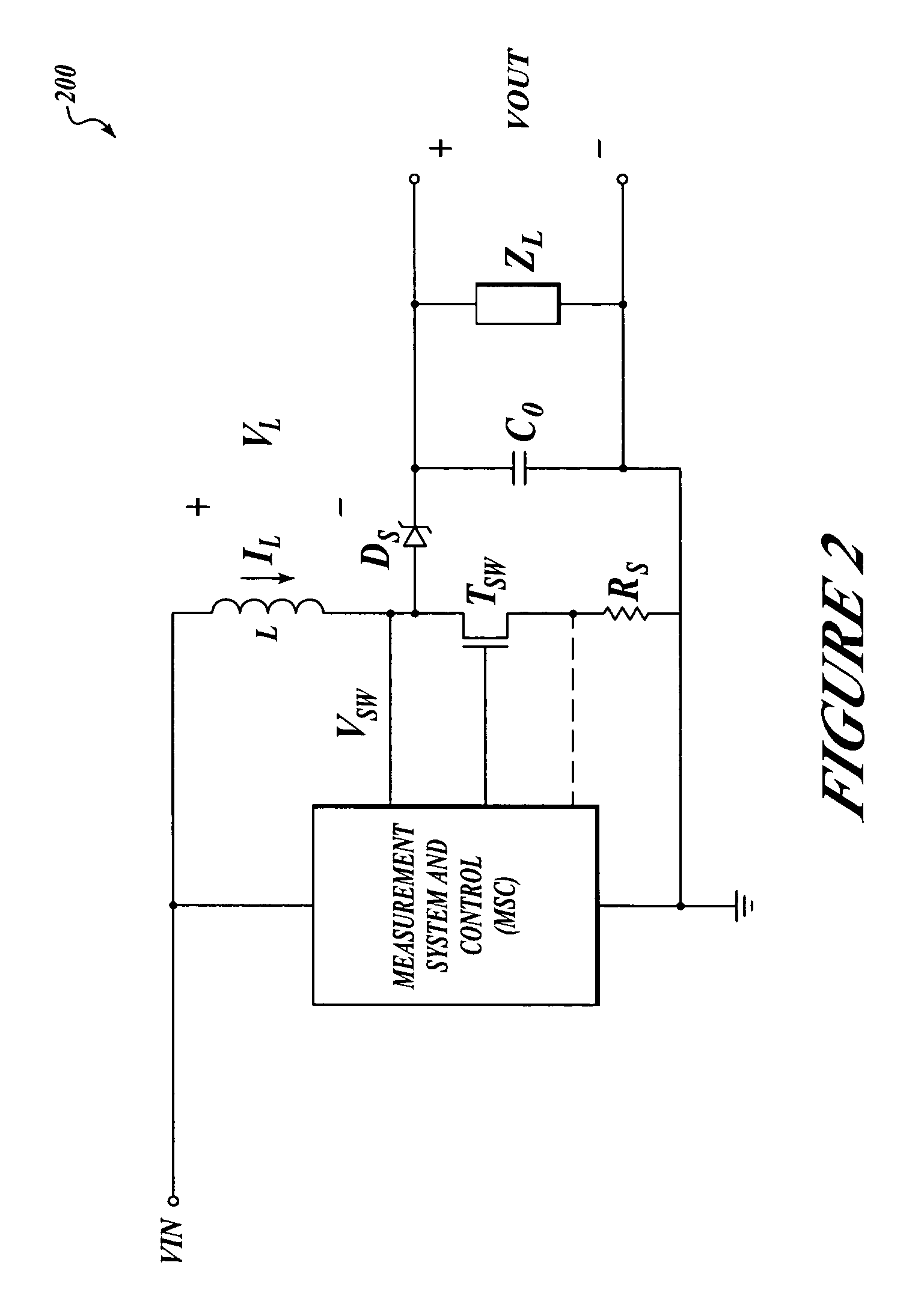Adaptive small-signal compensation for switching regulators
- Summary
- Abstract
- Description
- Claims
- Application Information
AI Technical Summary
Problems solved by technology
Method used
Image
Examples
example regulator
[0042]FIG. 7 illustrates an example regulator system (700) that is arranged according to an aspect of the present invention. The example regulator system includes an inductor (L), a capacitor (C), a load (ZL), a switch circuit, a control circuit, and a feedback circuit. Inductor L is arranged to store energy that is delivered to the load when activated by the switch circuit. The switch circuit is responsive to drive signals that are provided by the control circuit. The feedback circuit is arranged to sense the output voltage of the regulator. The control circuit and the feedback circuit are arranged to cooperate with one another to control the charging cycle time of the inductor to maintain proper regulation.
[0043]In operation, the control circuit and / or the feedback circuit are responsive to a measurement signal (V1). The measurement signal (V1) is related to one or more parameters associated with the inductor (e.g., an inductance value). Regulator system 700 has a loop trans...
example adjustable resistance
Circuit
[0048]FIG. 9 illustrates a schematic diagram (900) for an example adjustable resistor circuit (830) that is arranged according to an aspect of the present invention. The adjustable resistor circuit (830) includes two resistors and a transistor. The transistor and the first resistor are series coupled to one another to form a first resistance circuit between terminals A and B. The second resistor is series coupled between terminals A and B to operate as a second resistance circuit. The overall resistance between the two terminals (A and B) corresponds to the parallel combination of the two resistance circuits.
[0049]The first resistor has a value corresponding to Ra, while the second resistor has a value corresponding to Rb. In operation, a control signal (VC) is applied to the control terminal of the transistor such that the series resistance associated with the transistor is adjusted. In one example, the transistor's series resistance varies over an approximate range of open ...
PUM
 Login to View More
Login to View More Abstract
Description
Claims
Application Information
 Login to View More
Login to View More - R&D
- Intellectual Property
- Life Sciences
- Materials
- Tech Scout
- Unparalleled Data Quality
- Higher Quality Content
- 60% Fewer Hallucinations
Browse by: Latest US Patents, China's latest patents, Technical Efficacy Thesaurus, Application Domain, Technology Topic, Popular Technical Reports.
© 2025 PatSnap. All rights reserved.Legal|Privacy policy|Modern Slavery Act Transparency Statement|Sitemap|About US| Contact US: help@patsnap.com



